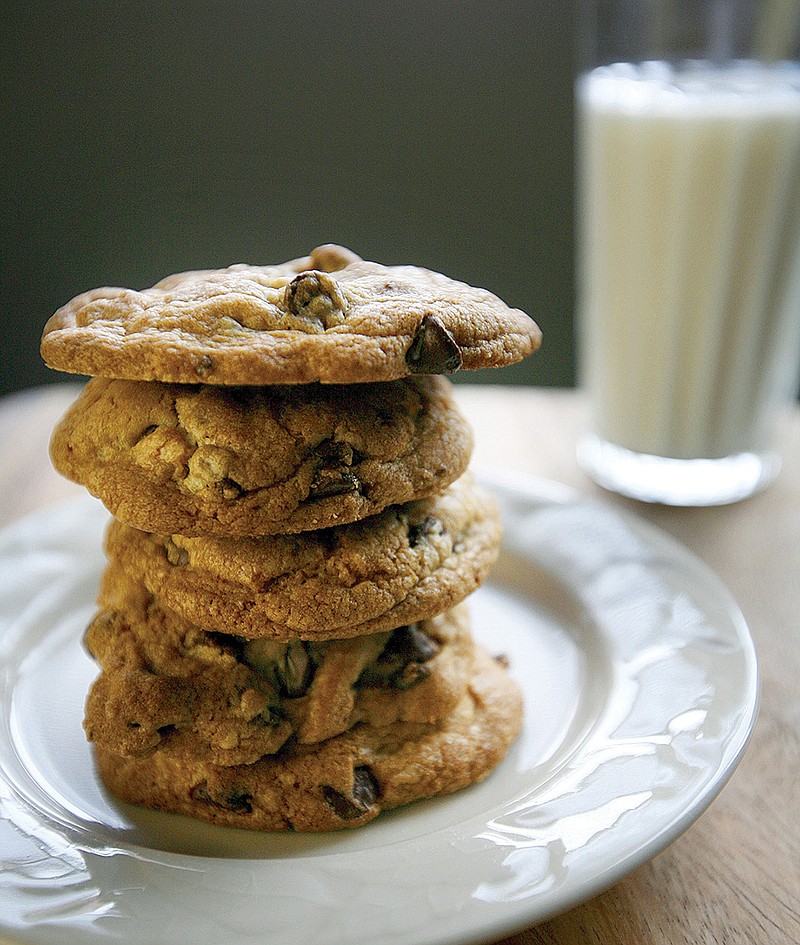Q: What are the differences between baking soda and baking powder (double acting)? Why would one or the other be used in some recipes, and why are both used in some recipes?-Frank Reid, Ferndale, Mich.
A: The quick answer is both are used as leaveners. But the difference is how they are activated. A small amount of baking soda (sodium bicarbonate) used as a leavener goes a long way because it's stronger than baking powder. Baking soda needs an acidic ingredient (buttermilk, yogurt or sour cream) to make it work so things will rise. The acidic ingredient also neutralizes the baking soda so you don't get a metallic aftertaste in the baked good. But more baking soda doesn't mean more rise. If you use too much, it will also leave an aftertaste (see formula below).
The difference between the two is that baking powder already contains the acidic component, usually cream of tartar, along with the baking soda and cornstarch to prevent clumping. Baking powder is typically used in recipes that don't have an acidic ingredient.
When baking soda comes in contact with acidic ingredients, it forms carbon dioxide gas. Baking soda, unlike baking powder, doesn't require heat to make it react. That is why many recipes call for mixing dry ingredients (flour, baking power and salt) together before adding the liquids. But because those gases form immediately, the product must be baked right away or the gases will dissipate and lose the leavening power. Keep in mind honey, molasses, brown sugar, fruit juices and cocoa (not Dutch-processed, which has alkaline) have an acidic component.
Baking soda not only makes cakes and quick breads rise, it helps tenderize baked goods and has a browning effect. Because baking soda has that browning effect, you will see it used in some cookie and cake batters. Also, using a small amount of baking soda in cookies means they'll have a crisp texture.
Today, most of the baking powders at grocery stores are labled "Double Acting." That means some of the gas is released when cold, but that it needs heat to complete the reaction process. Because it reacts when cold, that means you can mix your cake batter and let it sit for a bit and the remaining gases will form when baked.
Keep in mind that white powders have a shelf-life. Both usually have expiration dates on the package. If either one is expired, your baked good can fail.
The two white powders are also completely interchangeable. Here's the basic formula:
n Use baking soda in place of baking powder as long as there is an acidic ingredient in the recipe. Use 1 teaspoon baking powder (no more than 1 1/4 teaspoons) per cup of flour or 1/4 teaspoon baking soda per cup of flour.
n If the recipe calls for 1 teaspoon baking powder, use 1/4 teaspoon baking soda provided there is an acidic ingredient. If a recipe has baking powder with an acidic ingredient, you need to add some baking soda to neutralize the acid.
CHEWY CHOCOLATE
CHIP COOKIES
Makes: 4 dozen / Preparation time: 10 minutes / Total time: 30 minutes
3/4 cup (1 1/2 sticks) unsalted butter, softened
2/3 cup dark brown sugar
2/3 cup sugar
2 tablespoons light corn syrup
1 tablespoon cider or white vinegar
2 large eggs
1 tablespoon vanilla extract
1/2 teaspoon salt
1/2 teaspoon baking powder
1/4 teaspoon baking soda
2 1/4 cups unbleached all-purpose flour
3 cups semisweet chocolate chips
Preheat the oven to 375 degrees. Lightly grease (or line with parchment) several baking sheets.
In a mixing bowl, cream together the butter, sugars, corn syrup and vinegar for 3 minutes. Beat in the eggs one at a time, beating well after each addition. Beat in the vanilla, salt, baking power and baking soda. Stir in the flour. Fold in the chocolate chips.
Drop the dough by the tablespoonful onto baking sheets. Bake for 10 minutes or until just set. Remove them from the oven and cool 1 minute on the baking sheet. Transfer cookies to a wire rack to cool completely.
Adapted from "The King Arthur Flour Cookie Companion: The Essential Cookie Cookbook" by King Arthur Flour (The Countryman Press, $29.95). Tested by Susan Selasky for the Free Press Test Kitchen. Analysis per 1 cookie.
Nutritional data per serving: 124 calories (44 percent from fat), 6 g fat (4 g saturated fat), 17 g carbohydrates, 1 g protein, 40 mg sodium, 17 mg cholesterol, 1 g fiber.

